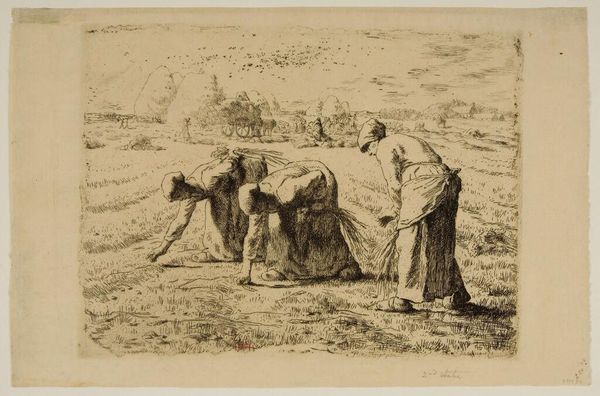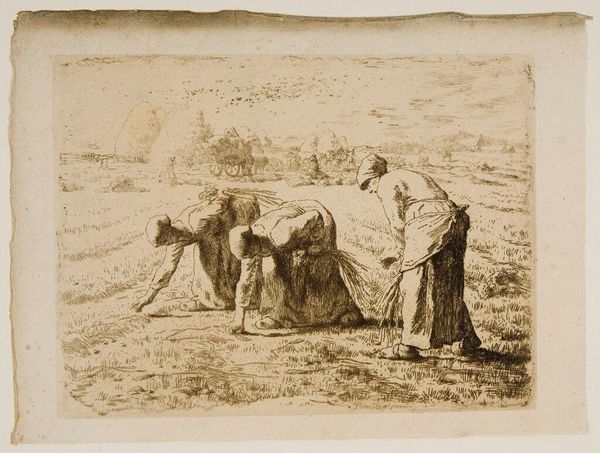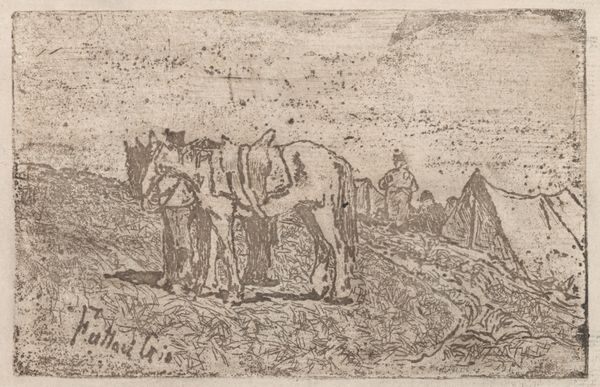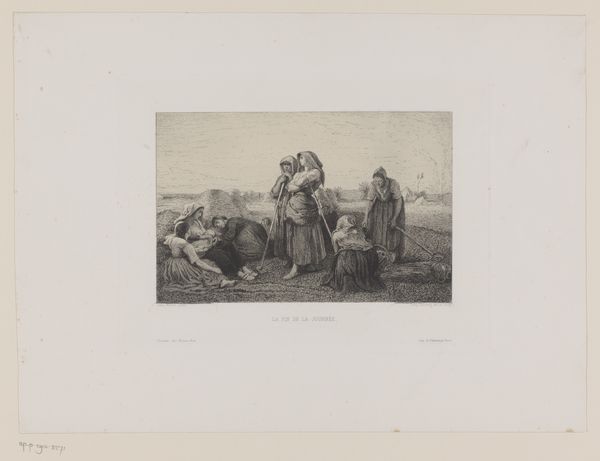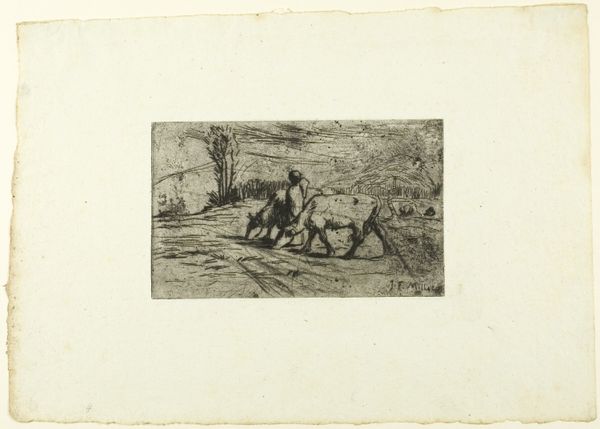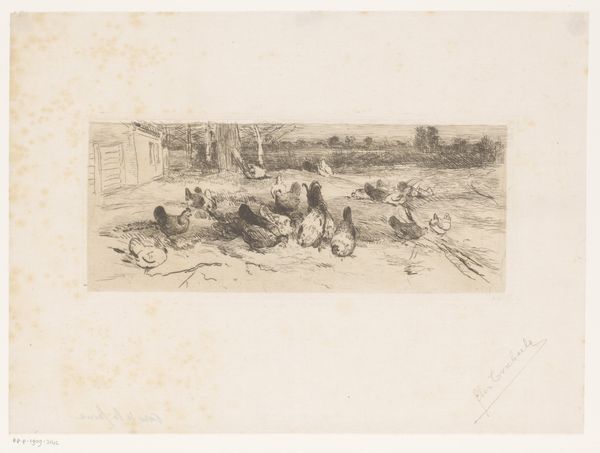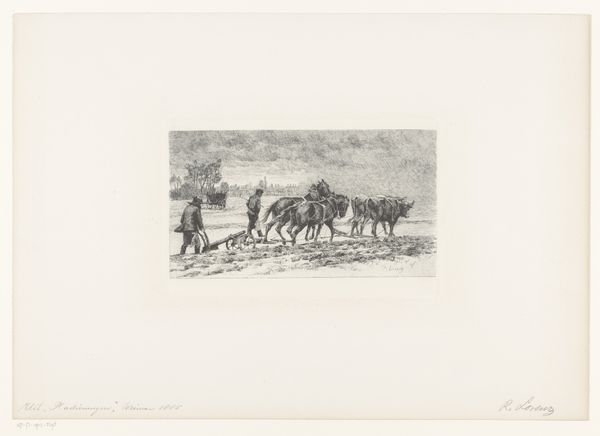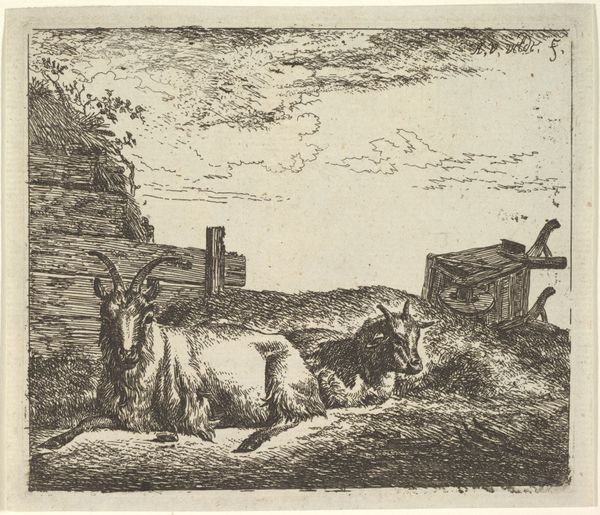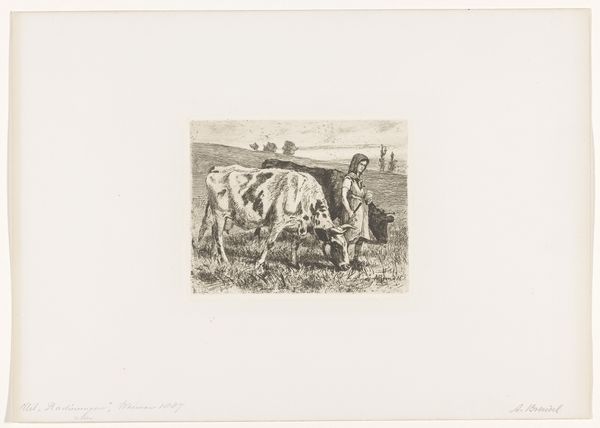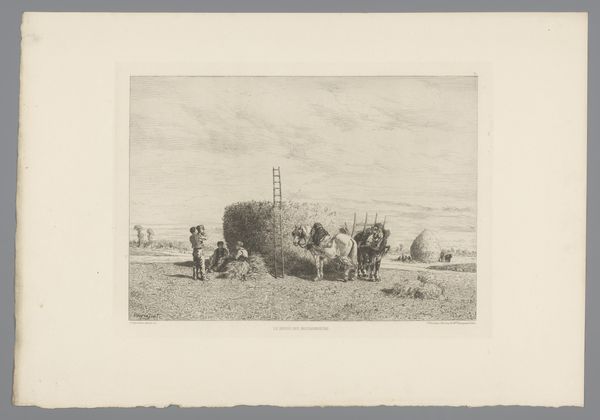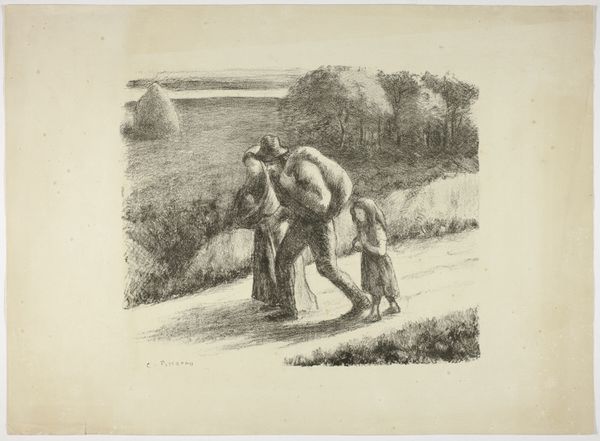
drawing, print, etching, paper
#
drawing
#
16_19th-century
# print
#
etching
#
landscape
#
paper
#
genre-painting
#
realism
Dimensions: 165 × 133 mm (image/plate); 343 × 248 mm (sheet)
Copyright: Public Domain
Editor: So here we have "Peasant with a Wheelbarrow," an etching on paper done by Jean-François Millet around 1855, currently residing at The Art Institute of Chicago. I’m immediately struck by how this small print, likely no bigger than my hand, captures such a vast scene of rural labor. The figures seem stoic, almost monumental despite the scale. What speaks to you most in this piece? Curator: Ah, yes, Millet. He elevates the everyday, doesn’t he? For me, it’s the weight of the ordinary, transformed by his artistic lens. Think of it: these aren’t romanticized shepherds; they're workers etched with…well, etching, quite literally. It's that back-breaking bend of labor rendered with such care. Do you get a sense of solidarity in this scene, or perhaps isolation? Editor: I can see both, actually. There’s definitely a sense of shared labor, but they also seem quite alone in their individual efforts. Their faces are obscured, almost erased. Curator: Exactly! This allows us to focus on the act of working itself. The rough, almost crude lines contribute to the rawness of the scene. You feel the sun on their backs, the dust in the air, am I right? It's far removed from the idealized pastoral scenes popular at the time, it is an ode to the worker, something really new and important. Editor: It makes you consider where your food comes from, doesn’t it? There’s a real honesty here that is super compelling. Curator: Precisely. Art reflecting real life! Editor: So, looking closely, it definitely tells a more profound story than you might expect. Curator: It reminds us that beauty can be found not just in the grandiose, but in the grit of daily existence, it's quite poetic.
Comments
No comments
Be the first to comment and join the conversation on the ultimate creative platform.

